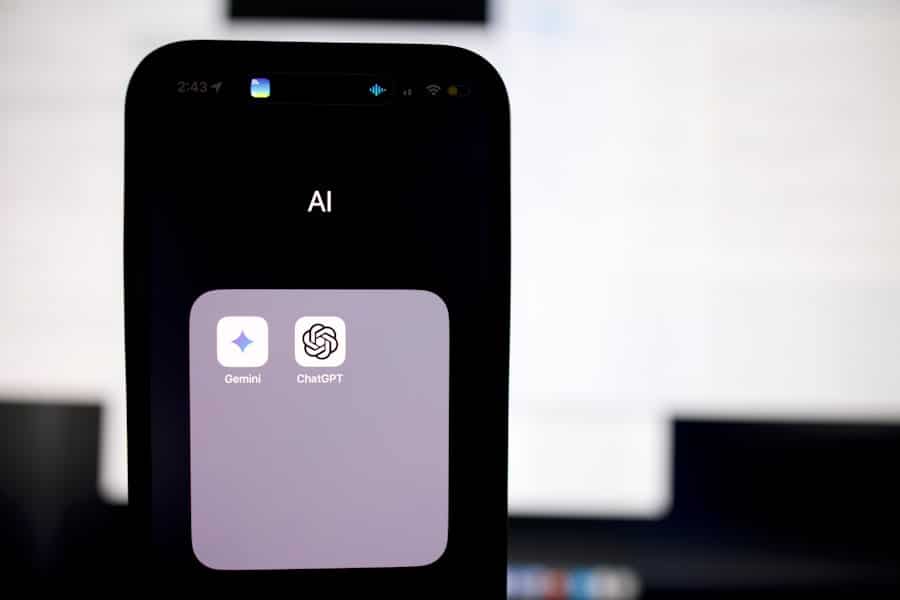ChatGPT, developed by OpenAI, represents a significant advancement in the field of artificial intelligence, particularly in natural language processing. This model is designed to understand and generate human-like text based on the input it receives. Its capabilities extend beyond simple text generation; it can engage in conversations, answer questions, and provide detailed explanations on a wide range of topics.
The underlying architecture of ChatGPT is based on the transformer model, which allows it to process and generate text in a coherent and contextually relevant manner. This makes it an invaluable tool for various applications, including customer service, content creation, and, notably, email automation. The versatility of ChatGPT is one of its most compelling features.
It can be fine-tuned for specific tasks, enabling users to customize its responses according to their needs. For instance, businesses can leverage ChatGPT to handle customer inquiries, manage internal communications, or even draft marketing emails. The model’s ability to learn from interactions means that it can adapt over time, improving its responses based on user feedback and evolving language patterns.
As organizations increasingly seek to streamline their operations and enhance customer engagement, the integration of ChatGPT into email automation processes presents a promising solution.
Key Takeaways
- ChatGPT is a powerful language model that can be used for email automation, providing personalized and efficient responses.
- Setting up ChatGPT for email automation is a straightforward process that involves integrating the model with your email platform.
- Custom responses can be created for different email scenarios, allowing ChatGPT to handle a wide range of inquiries and requests.
- Integrating ChatGPT with your email platform enables seamless communication, improving response time and accuracy.
- Training ChatGPT is essential for improving response accuracy, and monitoring and adjusting its performance is crucial for ongoing optimization.
Setting up ChatGPT for email automation
To harness the power of ChatGPT for email automation, the initial step involves setting up the model in a way that aligns with your specific requirements. This typically begins with selecting the appropriate version of the model that suits your needs.
For businesses looking to automate email responses, utilizing the API can facilitate direct communication between your email system and ChatGPT, enabling real-time processing of incoming messages. Once the model is integrated into your system, configuring it for email automation requires defining the parameters for interaction. This includes setting up triggers for when ChatGPT should respond to emails—whether it’s based on specific keywords, sender addresses, or types of inquiries.
Additionally, establishing a framework for categorizing emails can enhance the efficiency of the automation process. For example, emails can be sorted into categories such as inquiries, complaints, or feedback, allowing ChatGPT to tailor its responses accordingly. This setup not only streamlines communication but also ensures that responses are relevant and contextually appropriate.
Creating custom responses for different email scenarios

A critical aspect of utilizing ChatGPT for email automation is the creation of custom responses tailored to various scenarios. This involves developing a repository of potential queries and corresponding replies that reflect your organization’s tone and style. For instance, if a customer reaches out with a question about product availability, a well-crafted response might include not only the information requested but also an invitation to explore related products or services.
By anticipating common inquiries and preparing thoughtful responses in advance, businesses can significantly enhance customer satisfaction. Moreover, customizing responses allows organizations to maintain a consistent voice across all communications. This is particularly important for brand identity; customers should feel as though they are interacting with a cohesive entity rather than a disjointed system.
To achieve this, businesses can employ templates that incorporate variables such as customer names or specific product details. By leveraging these templates within ChatGPT’s framework, organizations can ensure that each response feels personalized while still benefiting from the efficiency of automation.
Integrating ChatGPT with your email platform
Integrating ChatGPT with your existing email platform is a crucial step in automating email responses effectively. Most modern email systems offer APIs or integration capabilities that allow third-party applications to interact with them seamlessly. For instance, platforms like Gmail and Outlook provide robust APIs that enable developers to create applications capable of sending and receiving emails programmatically.
By connecting ChatGPT to these platforms, businesses can automate the process of reading incoming emails and generating appropriate responses without manual intervention. The integration process typically involves setting up authentication protocols to ensure secure communication between ChatGPT and the email platform. Once established, developers can create scripts that monitor incoming messages and trigger responses based on predefined criteria.
For example, if an email containing the phrase “order status” is received, the script can automatically invoke ChatGPT to generate a response that provides the requested information. This level of integration not only saves time but also reduces the likelihood of human error in responding to customer inquiries.
Training ChatGPT to improve response accuracy
While ChatGPT is inherently capable of generating coherent text, training it further can significantly enhance its accuracy and relevance in specific contexts. This process involves providing the model with additional data that reflects the nuances of your business’s communication style and customer interactions. By feeding ChatGPT examples of past emails and ideal responses, organizations can help the model learn how to respond more effectively to similar inquiries in the future.
Training can also involve fine-tuning the model on specific datasets that represent common scenarios encountered in your industry. For instance, if you operate in the tech sector, providing examples of technical support queries along with appropriate responses can help ChatGPT better understand how to address such issues. Additionally, incorporating feedback loops where users can rate the quality of responses allows for continuous improvement over time.
As ChatGPT learns from these interactions, its ability to generate accurate and contextually relevant replies will improve significantly.
Monitoring and adjusting ChatGPT’s performance

Once ChatGPT is deployed for email automation, ongoing monitoring is essential to ensure its performance meets organizational standards. This involves regularly reviewing the quality of responses generated by the model and assessing whether they align with customer expectations and business objectives. Key performance indicators (KPIs) such as response time, customer satisfaction ratings, and resolution rates can provide valuable insights into how well ChatGPT is performing in real-world scenarios.
Adjustments may be necessary based on this monitoring process. If certain types of inquiries consistently yield unsatisfactory responses, it may indicate a need for additional training or refinement of the response templates used by ChatGPT. Furthermore, analyzing patterns in customer interactions can reveal emerging trends or common issues that require attention.
By proactively addressing these areas, organizations can enhance the overall effectiveness of their email automation efforts and ensure that customers receive timely and accurate information.
Best practices for using ChatGPT for email automation
Implementing best practices when using ChatGPT for email automation can significantly enhance its effectiveness and user experience. One fundamental practice is to maintain a clear and concise communication style in both training data and generated responses. Customers appreciate straightforward answers that address their inquiries without unnecessary jargon or complexity.
Additionally, ensuring that responses are empathetic and considerate can foster positive interactions and build trust with customers. Another best practice involves regularly updating the training data used by ChatGPT to reflect changes in products, services, or company policies. As businesses evolve, so too do customer inquiries; keeping the model informed about these changes ensures that it remains relevant and accurate in its responses.
Furthermore, incorporating user feedback into the training process allows organizations to refine their approach continually. By actively engaging with customers and soliciting their input on response quality, businesses can create a feedback loop that drives ongoing improvement.
Potential challenges and how to overcome them
Despite its many advantages, utilizing ChatGPT for email automation does come with potential challenges that organizations must navigate effectively. One common issue is ensuring that the model understands context accurately; without proper context recognition, responses may be irrelevant or misaligned with customer intent. To mitigate this risk, businesses should invest time in developing comprehensive training datasets that encompass a wide range of scenarios and contexts.
Another challenge lies in managing customer expectations regarding automated responses. Some customers may prefer human interaction over automated replies, particularly for complex issues or sensitive topics. To address this concern, organizations can implement hybrid systems where ChatGPT handles routine inquiries while providing an option for customers to escalate their issues to human representatives when necessary.
This approach not only enhances efficiency but also ensures that customers feel valued and heard throughout their interactions with the organization. In conclusion, while there are challenges associated with implementing ChatGPT for email automation, proactive strategies such as comprehensive training, continuous monitoring, and maintaining a balance between automation and human interaction can lead to successful outcomes. By embracing these practices and leveraging the capabilities of ChatGPT effectively, organizations can transform their email communication processes into streamlined operations that enhance customer satisfaction and drive business success.
If you are interested in automating tasks to improve efficiency, you may also want to check out this article on NeuronWriter Review: The Best Content SEO Optimization Tool. NeuronWriter is a tool that can help streamline the process of optimizing content for search engines, making it a valuable resource for businesses looking to improve their online presence.
FAQs
What is ChatGPT?
ChatGPT is a language generation model developed by OpenAI that uses machine learning to generate human-like text based on the input it receives.
How can ChatGPT be used to automate email responses?
ChatGPT can be used to automate email responses by integrating it with an email platform or using it to generate pre-written responses based on the content of incoming emails.
What are the benefits of using ChatGPT to automate email responses?
Using ChatGPT to automate email responses can save time, ensure consistency in responses, and handle a large volume of emails efficiently.
Are there any limitations to using ChatGPT for automating email responses?
While ChatGPT can generate human-like text, it may not always fully understand the context of an email, leading to potential inaccuracies in responses. It’s important to review and edit the generated responses before sending them out.
How can I integrate ChatGPT with my email platform?
There are various ways to integrate ChatGPT with an email platform, including using APIs provided by OpenAI or using third-party tools that offer integration with ChatGPT for email automation.
Is ChatGPT suitable for all types of email responses?
ChatGPT can be used for a wide range of email responses, but it may not be suitable for highly sensitive or complex communications that require a more personalized or nuanced approach.

